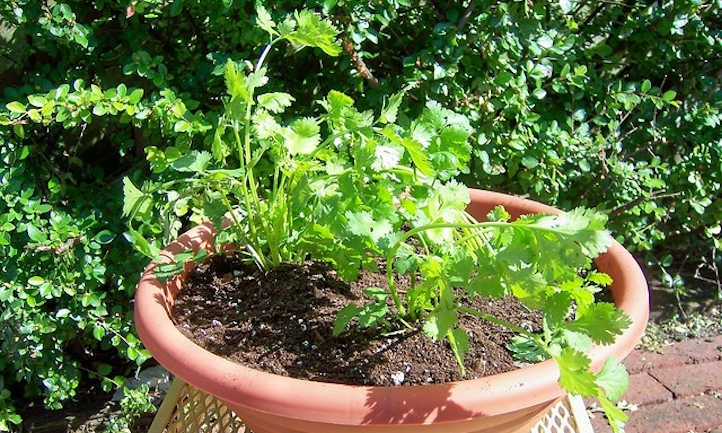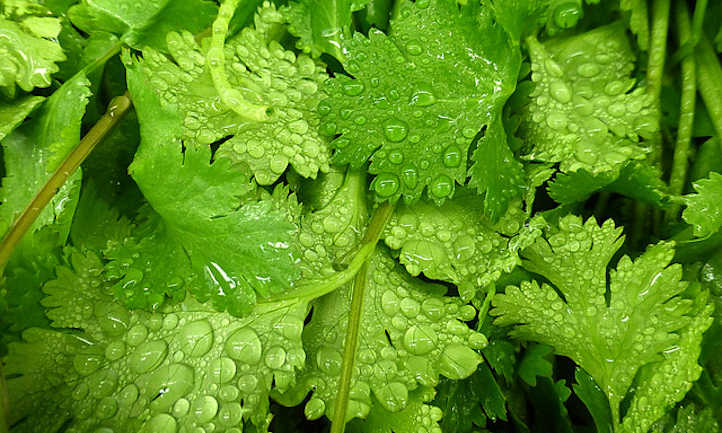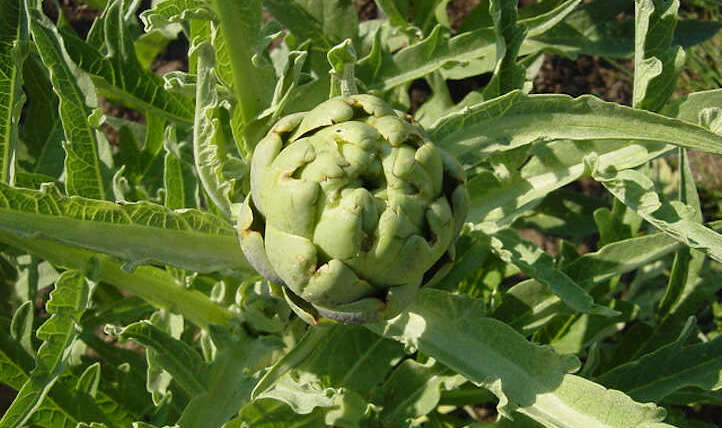If you're looking for easy-to-grow aromatic herbs to harvest in your garden year-round, coriander (Coriandrum sativum) is a great choice. Under the right conditions, growing coriander indoors quickly provides gardeners with an abundant supply of herbs, both indoors and outdoors.
Although its origins are difficult to pinpoint, most botanists agree that coriander originated from the Middle East to the Mediterranean. It is an annual herb that prefers well-drained soil. All parts of the plant are edible, including roots and seeds, and each has a specific seasoning purpose. That is why it is used in so many culinary settings. Fresh coriander with a taco or salad is really delicious!
Enjoy coriander from your home garden at every stage of its life cycle. Growing coriander indoors offers many options, including microgreens, full-grown leaves, to flowering and seed-producing plants. It can be eaten fresh in salads or cooked with dishes.
Read through the tips to make planting and harvesting herbs in the garden worthwhile.
Ways to grow cilantro indoors
Growing cilantro indoors means you can consume fresh herbs all year round. Source: nanik0re
Let's say you want to grow cilantro, but live in an apartment with little to no balcony space. Perhaps mobility is a problem for you, or the climate in your area is getting too warm or too cold for coriander. No problem! As long as the conditions are right, it is fine indoors.
South-facing windows in the northern hemisphere provide the coriander with the ultraviolet light it needs to thrive. In the southern hemisphere, look for a north-facing window. Here you can sprout your coriander in a potting soil. Harvest microgreens before the root system develops, or let the cilantro grow completely. Both microgreens and ripe leaves are used in dishes, including salads and sandwiches. The taste of leaves and microgreens is very similar.
When a window is not an option, grow lights are an excellent alternative. Remember, purple LED grow lights are an adequate source of light, but your plants can become susceptible to mold. This type of light does not dry out the soil between waterings.
White and yellow grow lights are the simulation closest to the actual full sun this plant prefers. An Agrobrite light is a great option for indoor growing as it provides light for a wide area. Since coriander seeds are sown so close together, full coverage like this will do. Grow cilantro indoors in trays that are wide enough to give the seedlings plenty of room, but small enough for your indoor growing area. The pods should have drainage holes and be deep enough to support the coriander root system. A depth of at least 20 cm is best for coriander plants.
Watering will be paramount to your coriander growing journey. Too little water and coriander bolts make the taste of the leaves bitter and shorten the life cycle. Too much and coriander can be in powdery mildew conditions. Choosing the best trays for your situation is therefore very important. If you find that your growing medium tends to stay moist, water your cilantro with a spray bottle. Alternatively, if the soil dries out quickly, you can use a retention tray to water from below.
The daily moisture content of your potting soil depends not only on your soil media, but also on the type and amount of incident light. One way to encourage coriander seeds to germinate is to provide a plastic cover that will hold in moisture and warmth while creating the ideal humidity level. This can be part of a set of trays with covers that you bought, or it can be made from items that you have around your home. Once the seeds sprout, remove the plastic cover to allow the plants to grow beyond their limits.
Another fun method of growing cilantro can be done in a grow tent. In general, tents take up a little more space than a window structure. However, if you find that your counter is more than adequate (a situation 2 feet by 4 feet wide), this may be your best option. Tents grow with light and help coriander plants maintain the humidity and temperature they need to thrive.
While harvesting hydroponically grown cilantro may not be as yielding as other herbs, it can still be done. This setting requires the correct temperature and pH conditions. Try a full setup to grow this herb in a hydroponics system.
Care for coriander indoors
 Providing a reliable source of light for cilantro is vital. Source: k8southern
Providing a reliable source of light for cilantro is vital. Source: k8southern
In each of the settings listed above, how should indoor growers care for coriander plants? Follow these steps and find out. You have cilantro in your home all year round.
Lighting & temperature
Coriander (cilantro) generally likes full sun to partial sun, which means at least six hours a day with some shade in the harsh afternoon sun. In situations where the temperature rises above 75 degrees, coriander has a tendency to screw up and bloom. This completely changes the taste of coriander leaves and makes it difficult to fit into a taste profile. Monitor the temperature in your home and around the growing area. In winter, you are likely to have fewer problems with too much sun or heat, as temperatures will not rise above the preferred level. Plants can enjoy more hours of sunlight per day in colder seasons. During these times, a heating mat can be a good option, especially if the temperature is expected to drop well below the optimal growth temperature of 75 degrees Fahrenheit.
With grow lights, there is no need to find the best location as you are already creating optimal conditions. However, if you want cilantro to grow in a window, make sure you place your trays in a south-facing window in the northern hemisphere and in a north-facing window in the northern hemisphere. Planting coriander in bowls in one of these areas, depending on the situation, results in the full coriander requirement. If you are germinating seeds with plastic covers, be sure to remove the cover as the seedlings grow. They don't like too much moisture. In a hydroponic setting, make sure temperatures don't exceed 80 degrees Fahrenheit. The same sunlight conditions apply.
Another great way to ensure that cilantro is getting the amount of sunlight it needs is to rotate the trays daily. This gives each leaf of cilantro sunlight and prevents plants from reaching for sunlight, which can lead to nutrient starvation. Overall, rotating containers give photosynthesis a boost and allow the plant to absorb the necessary nutrients.
If the sunlight in your home isn't enough for cilantro, try an indoor grow. As mentioned above, there are a few different options that should work well for cilantro. Grow cilantro indoors under a grow light with a timer or manually turn the source on and off for the cheapest leaf production. The same technique applies in a grow tent. Find one with a timer if you know you can't be there to turn it on and off manually.
One final note on placement when growing cilantro indoors: keep your trays, containers, or tents away from an HVAC system vent. Too much heat will dry out the soil and tell the cilantro that it is time to produce seeds to be sown for the next year. Too much cool air slows plants down when growing cilantro indoors. Moisture is an important part of understanding how cilantro is grown indoors. Too cool and wet from a climate and you will find that coriander is susceptible to powdery mildew.
Water & humidity
Since coriander prefers evenly moist soil, first water the seedlings with a spray bottle. In an environment with lots of sun or more intense heat, check the soil once or twice a day to make sure it is moist but not excessively wet. If your potting soil dries out frequently, pour it into a storage tray from the bottom. Monitor the water content in the holder to ensure there is sufficient absorption. If you find that the cradle has been filled with water too often, continue watering from the top.
Typically, coriander seeds and seedlings require more water than an established coriander plant. Be careful, however, that the soil does not dry out completely. When the soil is dry, add water. At higher heat settings, this means that watering is carried out more frequently. In cooler settings, there is less watering.
Grow tents hold moisture more than open trays. As mentioned above, after the seedling stage, coriander does not need higher humidity and prefers a drier climate. Check the leaves in tent settings regularly for signs of powdery mildew. The same applies to hydroponics, in which the growth medium (water) is added and evaporates, creating more moisture.
Growing medium & container
 Coriander is well worth the effort to grow! Source: arbyreed
Coriander is well worth the effort to grow! Source: arbyreed
Coriander prefers well-drained clay soil. A good organic potting soil or potting soil will do. You can grow cilantro in pots or large bowls with a depth of at least 8 inches. Your container can be a terracotta pot or a plastic bowl. Whatever is available to you will have the greatest impact on the situation you choose. If there isn't enough space for a wide tray, a saucepan is just as suitable. Make sure the containers are adequately drained. And pots or trays both need something to catch water from below.
If soil is a less desirable option, other media, such as coconut, can be used. Just break the medium open and put it in a pot to sprout seeds. In this case, watering does not need to be done as often as in the ground. Growing indoors in a non-soil medium is easy as long as the basic conditions are met.
When planting cilantro in a self-watering container, keep an eye on the moisture levels of your growing medium. Self-watering containers make it easier to water plants, but may be more susceptible to mold than a terracotta pot that draws moisture away from the ground or a growing bowl that tends to hold in moisture for plant absorption. For a hydroponic setting, try a full kit and make sure the water used in the system is at the correct pH (6.5-6.7).
Fertilize
There is some debate about whether or not to fertilize cilantro. A good rule of thumb: avoid fertilizers at the seedling stage. Once the plants are established, they can rarely take a water-soluble fertilizer. Wait at least four weeks after the sprouts show up. If you don't have fertilizer on hand, no problem. As long as you have a rich growing medium, coriander without fertilizer will do.
clipping
Once the cilantro gets going, it's time to cut it! Harvesting coriander is a breeze. Like most herbs, coriander growth increases with every cut. If you prefer coriander microgreens, prune 1-inch seedlings at least twelve hours after the last water. If you are cutting adult coriander leaves, use kitchen scissors to secure the growth point in place. The more you harvest coriander tips, the bushier it will be.
Once coriander blooms, the taste of the rest of the plant changes permanently. You can still cut flowers at this point to keep growth going. However, don't expect to use them the same way you did before. Like the rest of the plant, fresh coriander flowers can be eaten raw or cooked. Harvesting cilantro before flowering is best because this is where the flavor is easiest to work with.
The best option, once the plant begins to bloom, is to let it slide around and collect coriander seeds for the next season. You can collect green coriander seeds in a paper bag and in a few days they will be dry and ready for storage. Another method of collecting coriander seeds is to cut screwed stems and hang them upside down in a bag. When the stems are dry, the seeds will fall into the bag and you won't miss a single one.
plants
 Coriander seeds starting inside are easy. Source: juandoso
Coriander seeds starting inside are easy. Source: juandoso
Planting coriander is best done from seeds. Coriander seedlings are prone to transplant shock. Each coriander seed husk contains 1 to 2 seeds, and the seeds can be sown relatively close together, 2 to 3 inches apart. If you are growing in a container about 30 cm wide, sow up to 12 seeds in a row. If you sow too many seeds, don't worry. Overcrowding isn't a huge problem for cilantro, especially if you have the opportunity to thin seedlings as they rise from the ground 8-10 inches apart.
It is not necessary to soak coriander seeds to encourage growth, but this could aid the germination process. To do this, carefully break the seeds open in a plastic bag with a rolling pin. Then, soak them in enough water to cover them for 12 to 24 hours. Then plant coriander seeds as if you were drying seeds. Microgreens are ready within 2 weeks. Ripe coriander leaves are ready for harvest after four weeks. A coriander plant grows to maturity in 45 days.
For hydroponic setups, use the seed soaking method outlined above. Then divide the coriander seeds into three batches in a sieve over five to six days. Transfer them to your hydroponic system at the beginning of each batch for harvest.
Troubleshooting
Insect pests, hungry rabbits, and voracious deer aren't a huge problem when you grow cilantro in your home. However, there are a few things to consider, most of which are related to light and water conditions.
Too much water and little light can lead to powdery mildew, a fungus that damages the leaves first and then the entire plant as a whole. If you notice powdery mildew on your herbs, remove the damaged parts of your plant and let the soil dry a little before adding water again.
If the soil is too moist, it can also attract fungus mosquitoes, which feed on the roots as they grow. Adult mosquitoes are easy to control with sticky traps and by reducing the amount of water. However, their larvae are a little trickier as they are hidden in the ground. Keep a watchful eye to catch adults quickly so they don't lay eggs that will become these dreaded larvae!
Another situation caused by too much water or poor drainage is root rot. In this case, the first sign shows when the leaves are wilting. To check for root rot, lift the root system out of your tray or container and examine the root color. When the roots are brown as opposed to white, it may be time to say goodbye to your plant for the season. If there are still white roots, try removing the rotten ones and supplying your coriander plant with all of the new potting soil.
Coriander plants can also wither if they are under water. To fix this, pour evenly, not too wet or too dry. Moist but not moist soil is ideal.
The green fingers behind this article:




